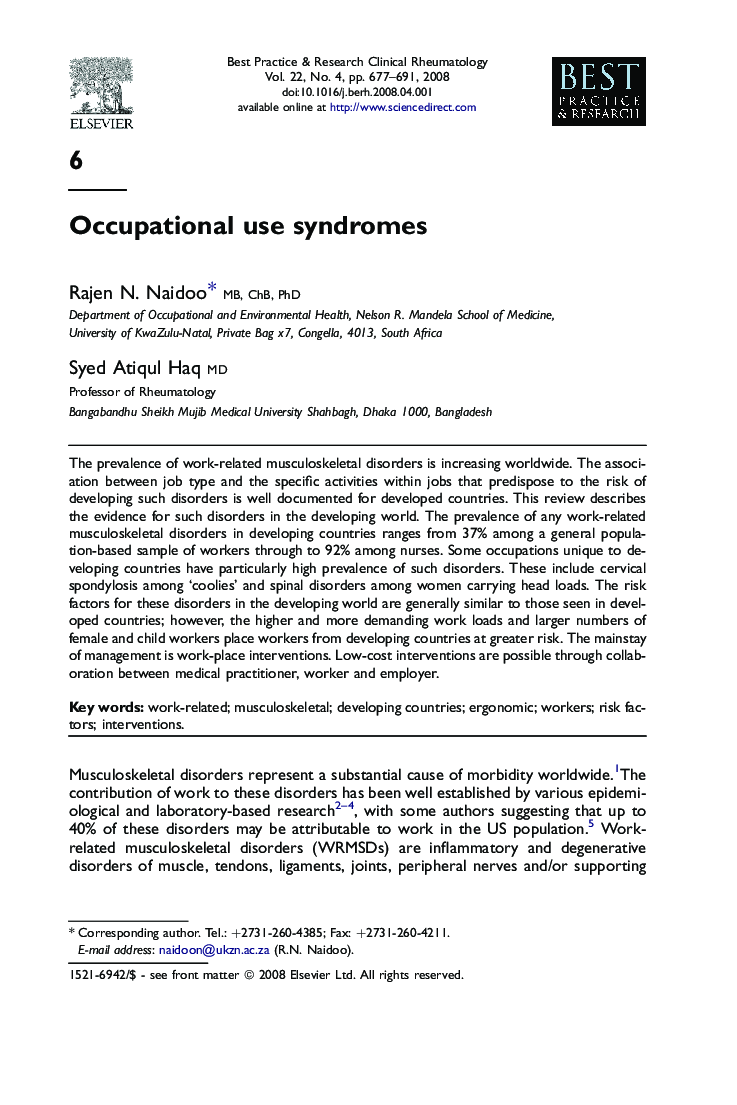| Article ID | Journal | Published Year | Pages | File Type |
|---|---|---|---|---|
| 3343209 | Best Practice & Research Clinical Rheumatology | 2008 | 15 Pages |
The prevalence of work-related musculoskeletal disorders is increasing worldwide. The association between job type and the specific activities within jobs that predispose to the risk of developing such disorders is well documented for developed countries. This review describes the evidence for such disorders in the developing world. The prevalence of any work-related musculoskeletal disorders in developing countries ranges from 37% among a general population-based sample of workers through to 92% among nurses. Some occupations unique to developing countries have particularly high prevalence of such disorders. These include cervical spondylosis among ‘coolies’ and spinal disorders among women carrying head loads. The risk factors for these disorders in the developing world are generally similar to those seen in developed countries; however, the higher and more demanding work loads and larger numbers of female and child workers place workers from developing countries at greater risk. The mainstay of management is work-place interventions. Low-cost interventions are possible through collaboration between medical practitioner, worker and employer.
